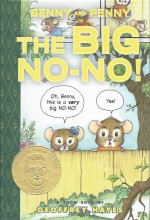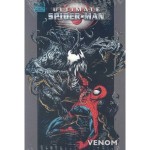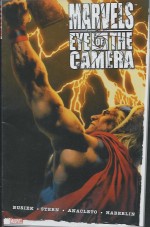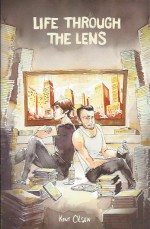Win’s Christmas Gift Recommendation: still readily available and utterly essential because everybody needs to dream big and wild… 10/10

By Kazu Kibuishi (Scholastic)
ISBN: 978-0-545-09893-9
Every so often a strip comes along that perfectly encapsulates the astonished joyous awe, suspenseful sadness and gleeful terror of being young, simultaneously managing to regress every adult who reads it back to those halcyon days of sheer, wide-eyed wonder. Little Nemo, Pogo, Barnaby, Akiko on the Planet Smoo, Eric Shanower’s assorted forays into the worlds of Oz and especially Calvin and Hobbes all possess that amazing facility to utterly beguile young and old alike, and I’m sure I detect the faintest echoes of all of them in this superb and far too infrequent online series from cartoonist, designer, author and editor Kazu Kibuishi which began life as a kind of personal art-therapy webcomic in 2002.
According to his introduction, Kibuishi – whose other works include the successful Amulet sequence of supernatural junior graphic novels, Explorer – the Mystery Boxes, Flight and other fine graphic marvels – turned an unused T-shirt design into a purely creative exercise during a low period in his personal life.
The monochrome and wordless ‘Rocket Pack Fantasy’ introduced a nervous but inquisitive little kid and his morose dog in a wild-riding daydream, but the real beginning was the full-colour page ‘Big Robot’ – another off-hand tribute to Winsor McCay which gave the characters voices and names in another action-packed dream – after which the boy Copper and his stalwart canine Fred met monsters and pursued an adorable little red-headed girl trapped in ‘Bubbles’.
Fred became stroppier and more surly with every instalment: ‘Waves’ found the boisterous buddies surfing Hokusai breakers whilst ‘Climbing’ found the dog and his boy pondering the pros and cons of scaling the mountains above the clouds and ‘Ruins’ saw an explorer’s enthusiasm brought low by canine pessimism, although they were in total agreement about the necessity of an epic voyage to get genuine Aunt Koko ‘Melon Bread’ – accept no substitutes…
‘Mushroom Crossing’ was the first extended exploit: an 8-page visual extravaganza which found the duo negotiating a chasm via spectacular fungoid stepping stones, before returning to single page thrills such as jogging with the ‘Racing Shrimp’…
Another unobtainable and enigmatic young lady mischievously introduced her dark-haired self in ‘Bridges’ after which Fred humiliated himself before a jury of his peers by performing ‘Somersaults’ and only perked up after a visit to the ‘Tide Pool’.
A baffling world of ‘Freestyle’ art led to a frustrating chase as Copper narrowly missed both his dream girls in ‘Ballads’, whilst a sad seasonal celebration left the oneiric adventurers ‘Blue’ leaving Fred to ponder the perils of venturing ‘Outside’.
‘Picnic’ is a silent 4-page rumination on travel by balloon which first appeared in the aforementioned themed-anthology Flight whilst ‘Fall’ examines Autumnal sensitivities and Fred’s latest bout of amour, before the ramblers return to the seas in time to get caught in a staggering ‘Storm’.
That elusive dark minx then left Fred a little present whilst Copper examined an imaginary ‘Summer House’, but the preoccupied pair missed both her and a cute blonde number in ‘Transit’, after which another seaside excursion on a surfboard offered a very deceptive ‘Lull’ in their action-packed lives…
‘Happy’ introduced a couple of effusively weird and needy characters but building a boat in ‘Sail’ soon restored our unlikely heroes’ grouchy equilibrium and visiting a beautiful ‘Waterfall’ did the same for their contemplative calm.
Outer space beckoned in ‘Mission Control’ but gambling held no fascination for them in ‘Arcade’, although dabbling with Ham Radio ‘Signals’ brought the boy frustratingly close to that little blonde girl, even as his far-from-shopping-savvy canine companion found no solace at all in his latest impulse ‘Purchase’…
‘Dive’ then uncovered the dog’s deepest secrets and the pair soon discovered that robots made great ‘Dancers’ before an 18-page epic (also from Flight) offered a delightful extended exploit as Copper built his own airplane – despite Fred’s help – and they embark upon a truly fantastic ‘Maiden Voyage’…
Even Fred’s pessimistic musings couldn’t spoil a quiet afternoon of the ‘Good Life’, though Copper’s crazy quest for adrenaline thrills – such as leaping off the ‘Jump Station’ – just might. Still, riding a giant turtle in ‘Slowrider’ was pretty restful even if scooter-riding through a bustling ‘Metropolitan’ centre was a mixed blessing…
After hurdling giant flying mushroom ‘Steps’ Fred learned a sad lesson about pet-keeping in ‘Bunny’ before the wanderers encountered the strangest ‘Signpost’ ever and the boy joined a maritime mission in the role of aquatic ‘Observer’. Ruminations on labour then stemmed from messing with ‘Clockwork’ and Fred’s shaky self-esteem got a battering in the ‘Marketplace’.
‘Angler’ proved that the dog just doesn’t get the point of fishing whilst laser-tag received a dramatic boost when the lads played ‘Shooter’.
The beguiling peregrinations in this printed compilation end with an all-original 8-page adventure when the boys go for a walk in the woods and meet a monkey who seems – at first – only interested in their ‘Lunch Pack’. Of course, they couldn’t be more wrong…
This glorious and enthralling chronicle also includes a comprehensive and extremely informative look at the process of webcomic creation in ‘Behind the Scenes’ which will certainly aid any keen would-be creators make their own comics.
Kibuishi happily shares all his work secrets in ‘The Drawing Board’, ‘Thumbnails’, ‘Panels’, ‘Pencilling’, ‘Lettering’, ‘Inking’, before offering some instruction in the scientific arts of ‘Going Digital’ and ‘Colouring’.
Sheer whimsical surreality wedded to exuberant questing creativity, beautifully illustrated with warmth and subtle invention, makes Copper an utterly captivating read for young and old alike. This is a book unafraid to use poignant yearning, loss and introspection as well as slyly gentle humour and bold action and this series – hopefully to resume with new material one day – should sit happy in every nursery and on every family’s bookshelf.
© 2010 Kazu Kibuishi. All rights reserved.








